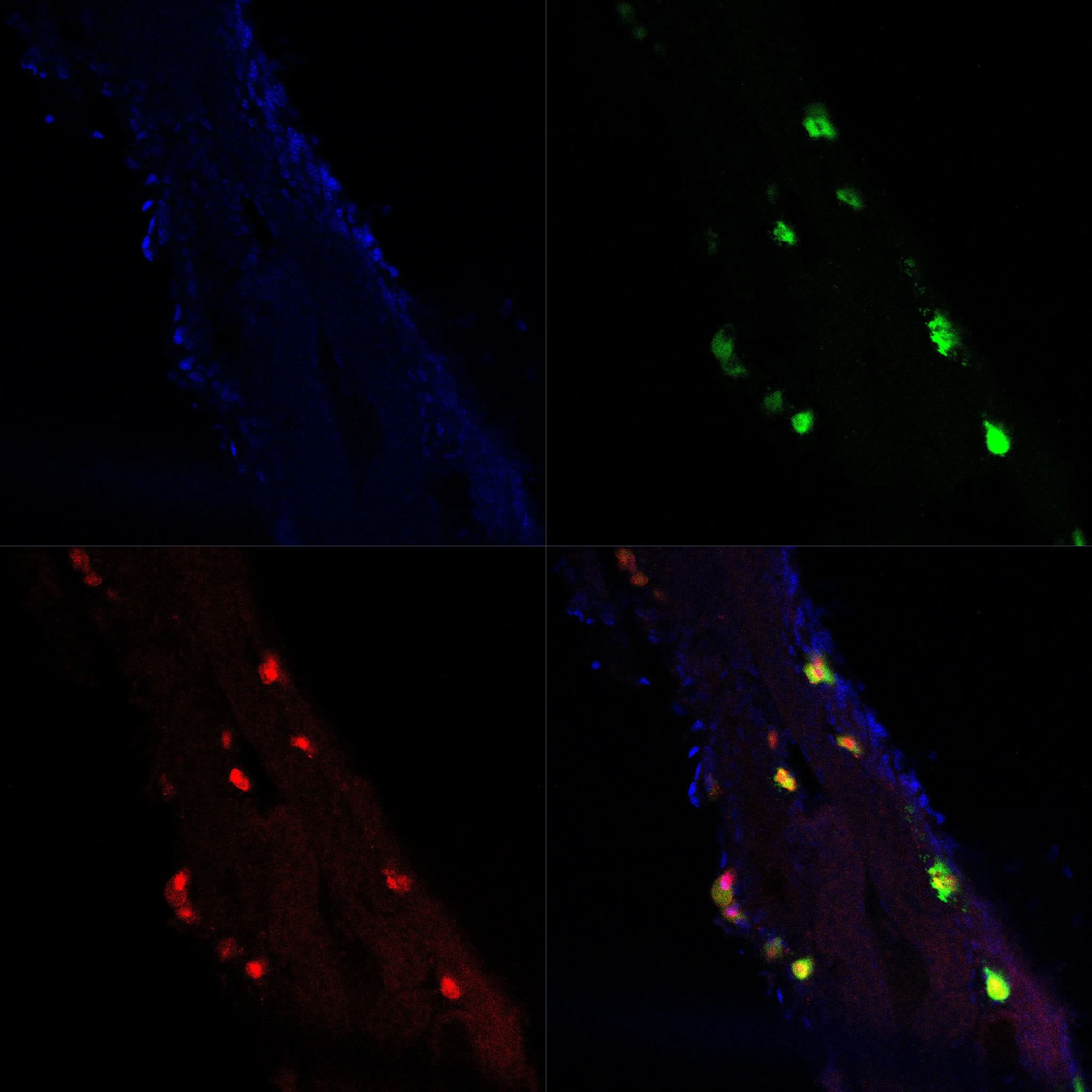Research
At Pundir Lab, we study how the innate immune system senses and responds to its environment to maintain tissue health and defend against infection. Our research centers on mast cells, granule-rich, tissue-resident immune cells found at barrier sites such as the skin and mucosa. As sentinels of the immune system, mast cells are uniquely positioned to detect both host- and microbe-derived signals and to coordinate immune responses.
We focus on how mast cells interpret their environment through cell surface receptors, particularly G protein-coupled receptors (GPCRs), and how this signaling regulates immune activation, inflammation, and homeostasis. Using genetically engineered mouse models, we aim to uncover the cellular and molecular mechanisms that drive mast cell-mediated immune responses in infection and inflammatory disease.
Research Pillars
1. Cell Surface Receptor Signaling in Innate Immunity
We investigate how mast cells decode extracellular cues through receptors such as Mrgprs, and how these signals shape immune activation, resolution, and tissue remodeling.
2. Immune Surveillance at Barrier Tissues
Our work explores how mast cells at the skin and mucosal surfaces monitor environmental changes, maintain homeostasis, and respond to infection or injury.
3. Neuroimmune Communication
We examine how mast cells interact with the nervous system, with a focus on how neuropeptides and microbial ligands influence immune activation and sensory responses.
4. Host Defense Mechanisms in Infection and Inflammation
We study how mast cells contribute to pathogen clearance and immune regulation, and how their responses can be protective or pathological depending on context.
5. Immune Cell Development in Tissue Context
We investigate how local tissue environment and the microbiota influence mast cell maturation, recruitment, and effector function across physiological and disease states.
Techniques Used
Mouse and microbial genetics, cell and tissue culture, multiparametric flow cytometry, confocal microscopy, sequencing, and infection models
Keywords
Innate immunity, mast cells, GPCRs, Mrgprs, quorum sensing, barrier immunity, host-pathogen interactions, neuroimmune signaling, inflammation, antimicrobial defense
Skin sections from a Mrgprb2-Cre:tdTomato reporter mouse showing mast cells stained with avidin (green) and tdTomato signal marking Mrgprb2-expressing cells (red). Yellow indicates complete colocalization, confirming that skin mast cells are Mrgprb2⁺.
Streptococcus pneumoniae strain D39 biofilms stained with crystal violet after incubation with medium alone (left) or human mast cells (right). Mast cells were counterstained with safranin (brown). Biofilms exposed to mast cells showed localized clearance and increased porosity, indicating reduced biofilm integrity.
3D confocal images of avidin–sulforhodamine (red) labeling mast cell granules in whole-mount mouse ears following CSP-1 injection, a quorum sensing molecule from S. pneumoniae (I). Quantification of mast cell degranulation per field of view (J). Scale bar: 50 μm.


